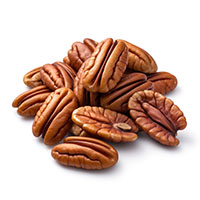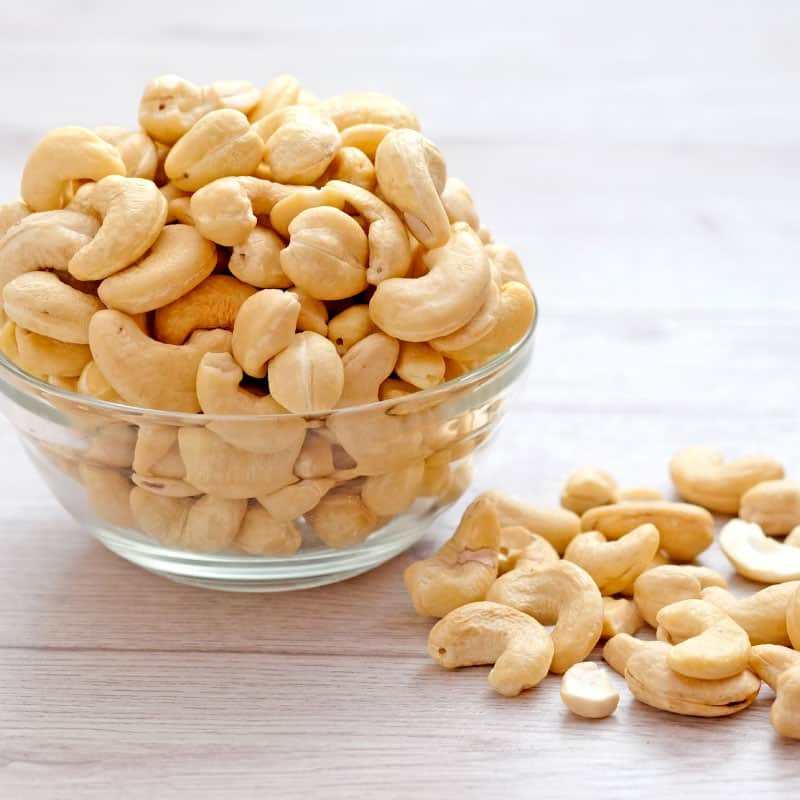Pecan Processing: AI Optical Sorters & X-Ray Inspection for Premium Quality Nuts
Pecan processors now rely on AI-powered optical sorters and X-ray inspection systems to detect and remove defects, contaminants, and foreign materials with unmatched precision—ensuring superior quality from in-shell to shelled nuts. These advanced technologies eliminate broken shells, mold, insect damage, stones, metal, and more, while minimizing recalls and meeting rigorous food safety standards. RaymanTech’s AI Optical Sorter and AI X-Ray Inspection System deliver real-time defect identification, adaptive learning, and comprehensive reporting, transforming efficiency and consistency across the entire production line.
| Product Type | Sorting Benefit |
|---|---|
In-shelled Pecans | Removes broken shells or debris, ensuring only whole pecans remain |
Shelled Pecans | Selects mature, healthy nuts, eliminating underdeveloped or damaged |
How Pecan Inspection and Sorting Works
Optical Sorting Technology
Pecan optical sorters integrate high-speed cameras, multi-spectrum sensors, and AI-driven algorithms to deliver precise, automated quality control. Vibratory feeders introduce nuts at a controlled rate, ensuring each piece is individually presented for inspection. As pecans pass through the inspection zone, advanced imaging captures detailed data on color, shape, texture, and internal structure.
Core Technologies
Component | Function |
AI & Computer Vision | Analyzes every nut in real time, classifying quality and ejecting defects or foreign materials with 99%+ accuracy. |
High-Definition RGB + IR + SWIR Cameras | Detect surface irregularities, discoloration, and subtle texture variations invisible to the human eye. |
Vibratory Feeder | Delivers a uniform, single-layer flow to prevent overlaps and maintain inspection consistency. |
Secondary Inspection Conveyor | Provides a second verification pass, boosting overall sorting precision. |
AI-Powered Decision Engine | Learns from each batch, adapting to new defect patterns and improving performance over time. |
Batch Reporting Software | Generates automated quality reports, yield statistics, and compliance documentation. |
The open-frame design simplifies cleaning and maintenance, while recipe-based controls allow operators to switch between in-shell and shelled pecan profiles in seconds—optimizing throughput for any grade or variety.
X-Ray Technology
RaymanTech’s AI X-Ray Inspection System complements optical sorting by revealing hidden defects and contaminants that surface imaging cannot detect. Operating in-line with optical sorters or as a standalone unit, it scans every nut at production speeds using low-dose X-ray beams and deep-learning analytics.
Key Capabilities
Defect / Contaminant | Detection Method |
Internal Kernel Defects | Identifies wormholes, blank/empty kernels, shriveled nuts, mold, oily spots, frozen damage, and sprouts. |
Foreign Materials | Pinpoints glass, metal fragments, stones, coal slag, rubber, and high-density plastics. |
Structural Issues | Flags cracked shells, deformed nuts, and embedded debris inside in-shell pecans. |
Real-Time AI Classification | Neural networks trained on thousands of defect patterns make instant accept/reject decisions. |
Adaptive Learning | Continuously refines detection models with each batch, reducing false rejects and improving yield. |
HACCP-Compliant Reporting | Logs images, defect types, timestamps, and ejection events for full traceability. |
The system integrates seamlessly with optical sorters via shared software, enabling a “dual-shield” workflow: optical units remove visible defects first, while X-ray catches the rest—delivering near-zero contaminant risk and maximum recovery of premium nuts. Hygienic, tool-free belt removal and automated self-clean cycles ensure compliance with USDA and FDA standards.
Benefits of AI Optical & X-Ray Pecan Sorting for Processors
RaymanTech’s dual-technology sorting line delivers measurable ROI through higher yield, reduced labor, and zero-recall confidence. Below are the top advantages that pecan packers, shellers, and exporters consistently report.
Business Impact | Quantified Gain |
Yield Recovery | Up to 3–5 % more saleable nuts by minimizing good-nut ejection (false rejects < 0.5 %). |
Labor Savings | Replaces 8–12 manual sorters per shift; one operator oversees 60,000 lb/hr line. |
Contaminant Removal | 99.9 % detection of glass, metal, stones; documented CCP for HACCP plans. |
Grade Consistency | Uniform Fancy, Choice, or Standard output meets USDA shield and retail specs every batch. |
Recall Prevention | Real-time defect logging + photo evidence eliminates liability exposure. |
Energy Efficiency | 40 % lower kWh/ton vs. legacy bi-chromatic sorters; LED + low-dose X-ray. |
In-Shell vs. Shelled Pecan Sorting: Side-by-Side Comparison
Parameter | In-Shell Sorting | Shelled Sorting |
Primary Focus | Shell integrity, debris, insect tunnels | Kernel maturity, rancidity, mold |
Optical Sensors Used | RGB + NIR for cracks & discoloration | RGB + SWIR for oil content & shrivel |
X-Ray Role | Detects hidden stones & metal in shell | Reveals blank kernels & internal mold |
Typical Throughput | 4–6 tons/hr | 2–3 tons/hr (higher value product) |
End-Market Fit | Gift tins, retail whole nuts | Snack packs, baking, ingredients |
FAQ
1. How does AI improve defect detection over traditional optical sorters?
AI analyzes 50+ attributes per nut (color gradients, micro-textures, density maps) in < 5 ms—achieving 99.9 % contaminant removal vs. 85–92 % with rule-based systems.
2. Will the X-ray system damage pecan flavor or shelf life?
No. Low-dose (≤ 80 keV) X-ray is non-thermal and FDA-approved for nuts; independent lab tests confirm zero change in peroxide value or fatty-acid profile after 12 months storage.
3. Can the sorter integrate with my existing packing line?
Yes—Modbus TCP/IP, OPC-UA, and EtherNet/IP protocols. Pre-built I/O for upstream crackers and downstream baggers.
4. What types of defects can the AI Optical and X-Ray sorters detect in pecans?
Our systems identify a wide range of issues, including shell fragments, insect damage, mold, shriveled or rancid kernels, discoloration, wormholes, blank/empty nuts, and foreign materials like stones, glass, metal, sticks, and plastics. Optical sensors handle surface defects with 99% accuracy, while X-ray reveals internal problems invisible to cameras.

Related Articles
-
 Nov-05-2025
Nov-05-2025Pecan Processing: AI Optical Sorters & X-Ray Inspection for Premium Quality Nuts
Pecan processors now rely on AI-powered optical sorters and X-ray inspection systems to detect and remove defects, contaminants, and foreign materials with unmatched precision—ensuring superior quality from in-shell to shelled nuts. These advanced technologies eliminate broken shells, mold, insect damage, stones, metal, and more, while minimizing recalls and meeting rigorous food safety standards.learn more -
 Nov-05-2025
Nov-05-2025Cashew Optical Sorting Solutions
Cashew sorting solutions combine AI-powered optical sorters and AI X-ray inspection systems to deliver premium-quality nuts. Optical sorters detect and remove damaged, broken, discolored, or over-roasted cashews based on color, shape, and texture. X-ray systems identify internal defects and foreign contaminants such as stones, metal, or empty shells. Together, these technologies ensure food safety, consistent quality, and maximum yield. Leading brands like RaymanTech set industry standards with integrated, high-precision sorting systems.learn more

Quick Links
Contact
Tel: 717-490-1513
Add: 1050 Kreider Drive -
Suite 500, Middletown,
PA 17057







